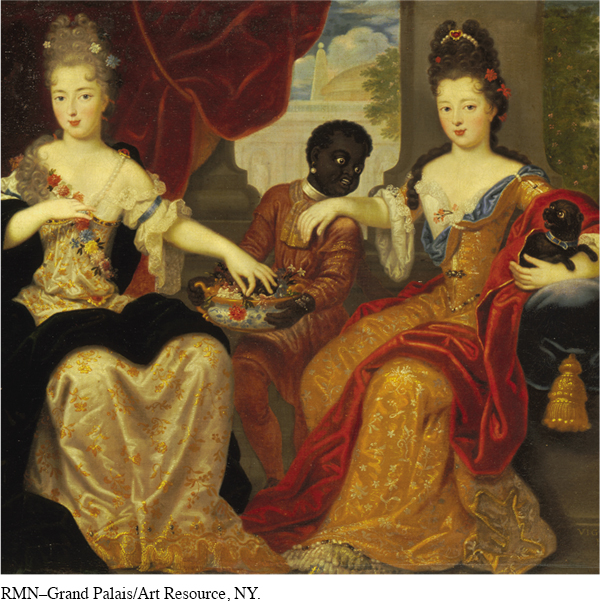The American Promise: Printed Page 68
MAKING HISTORICAL ARGUMENTS
Why Did English Colonists Consider Themselves Superior to Indians and Africans?
Were seeds of the racial prejudice that has been such a powerful force in American history planted in the seventeenth-
In the mid-
After Indians, the word the settlers used most frequently to describe Native Americans was savages. The Indians were savages in the colonists’ eyes because they lacked the traits of English civilization. As one Englishman put it in 1625, the natives of Virginia were “so bad a people, having little of humanitie but shape, ignorant of Civilitie, of Arts, of Religion; more brutish than the beasts they hunt, more wild and unmanly than that unmanned wild countrey, which they range rather than inhabite; captivated also to Satans tyranny in foolish pieties, mad impieties, wicked idlenesse, busie and bloudy wickednesse.” Some English colonists counterbalanced this harsh indictment with admiration for certain features of Indian behavior. They praised Indians’ calm dignity and poise, their tender love and care for family members, and their simple, independent way of life in apparent harmony with nature.

Color was not a feature of the Indians’ savagery. During the seventeenth century, colonists never referred to Indians as “red.” Instead, they saw Indians’ skin color as tawny or tanned, the “Sun’s livery,” as one settler wrote. To the English, tanned skin denoted a member of the working class who spent his or her days toiling under the sun; pale skin was the fashion. Many settlers held the view that Indians were innately white like the English but in other ways woefully un-
Despite their savagery in English eyes, Indians controlled two things colonists desperately wanted: land and peace. Early in the seventeenth century, when English settlements were small and weak, peace with the Indians was a higher priority than land. In this period, English comments on Indian savagery noted the obvious differences between settlers and Indians, but the colonists’ need for peace kept them attuned to ways to coexist with the Indians. By the middle of the seventeenth century, as colonial settlements grew and the desire for land increased, violent conflict with Indians erupted repeatedly. The violence convinced settlers that the only way to achieve both land and peace was to eliminate the Indians, by either killing them or pushing them far away from colonial settlements. English assumptions of their superiority to savage Indians provided justification and a gloss of respectability to the colonists’ violent and relentless grab of Indian land.
The colonists identified Africans quite differently. Their most common term for Africans was Negroes, but the other was not savage or heathen but black. What struck English colonists most forcefully about Africans was not their un-
Black was not a neutral color to the colonists. According to the Oxford English Dictionary (which catalogs the changing meaning of words), black meant to the English people who settled the Chesapeake “deeply stained with dirt; soiled, dirty, foul . . . having dark or deadly purposes, malignant; pertaining to or involving death, deadly; baneful, disastrous, sinister . . . foul, iniquitous, atrocious, horrible, wicked.” Black was the opposite of white, which connoted purity, beauty, and goodness—
Virginians did not legally define slavery as permanent, lifelong, inherited bondage until 1660. The sparse surviving evidence demonstrates, however, that colonists practiced slavery from the start. The debasements of slavery strengthened the colonists’ prejudice toward blacks, while racial prejudices buttressed slavery.
Colonists’ attitudes toward Indians and Africans exaggerated and hardened English notions about social hierarchy, about superiority and inferiority. Colonists’ convictions of their own superiority to Indians and Africans justified, they believed, their exploitation of Indians’ land and Africans’ labor. Those justifications planted the seeds of pernicious racial prejudices that flourished in America for centuries.
Questions for Analysis
Summarize the Argument: How did colonists’ views of Indians and Africans indicate their views about themselves? What were the consequences of English colonists’ belief in their own superiority?
Analyze the Evidence: How did the words colonists used to describe Indians and Africans indicate their beliefs? How did colonists’ views of Indians differ from their views of Africans?
Consider the Context: What basic contexts of ideas, identities, and desires shaped the colonists’ views of Indians and Africans?